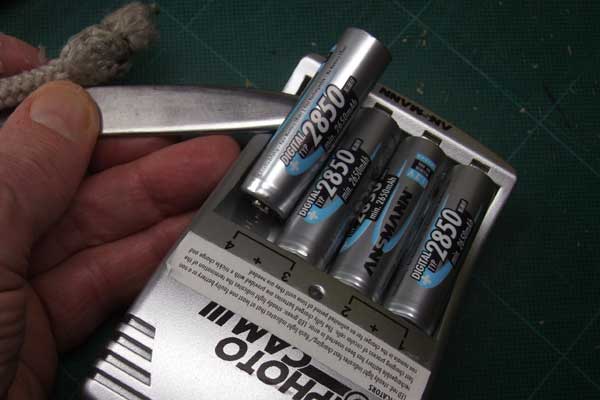
Fifty years ago my parents gave me a rather good pair of stainless steel gardeners' handtools~ a trowel and fork. They were rather special at the time because stainless steel was not generally used for such materials. It is nowadays far more available. Our recent gardens have been in very rocky soil. (There is a quarry a mile or two away.) Repeated over-straining on rocks took its toll on the fork, which lost a prong. The wooden handle of the trowel crumbled, and I could see no easy way to fix that either. I tried cutting one of the other prongs away from the fork. I think it took me an hour, with two hack-saw blade blunted beyond further use. I later drilled a hole in it. I can think of no reason for doing this, other than wanting to see how many drill bits it would take (three). (I did not know, at that time, about lubricating the drill-tip, let alone using cutting paste. My knowledge of metalwork is, even now, very weak.) Here is the result.

You can see that part of the shoulder-shaping has remained. I had learned enough about working with stainless steel to decide not to make things neat by filing away the remaining shoulder. It now serves as a subtle reminder, through my fingers, as to which way up the folder is being held, so I am glad I left it there.

The point of my new folder was rather worn, and I spent some time filing it to a finer taper both in width and thickness. That took time, but was well worth it. It is now great for even the most fine work. Some folder users will not like the curves, which although slight, mean that there is no great length of straight edge. I have observed some of my students relying on very straight and very long folders when creasing folios. Nothing wrong with that, but using the curve unwisely can result in non-creasing. The ease has to be at the exact point of contact of the curved surface, or edge, and the paper-edge.
Here are some pictures of my folder in use ~



I provide some links of the steel folder in use ~
~ smoothing down mdf rivet holes here [117530]~ smoothing down linen tape here [117530]
